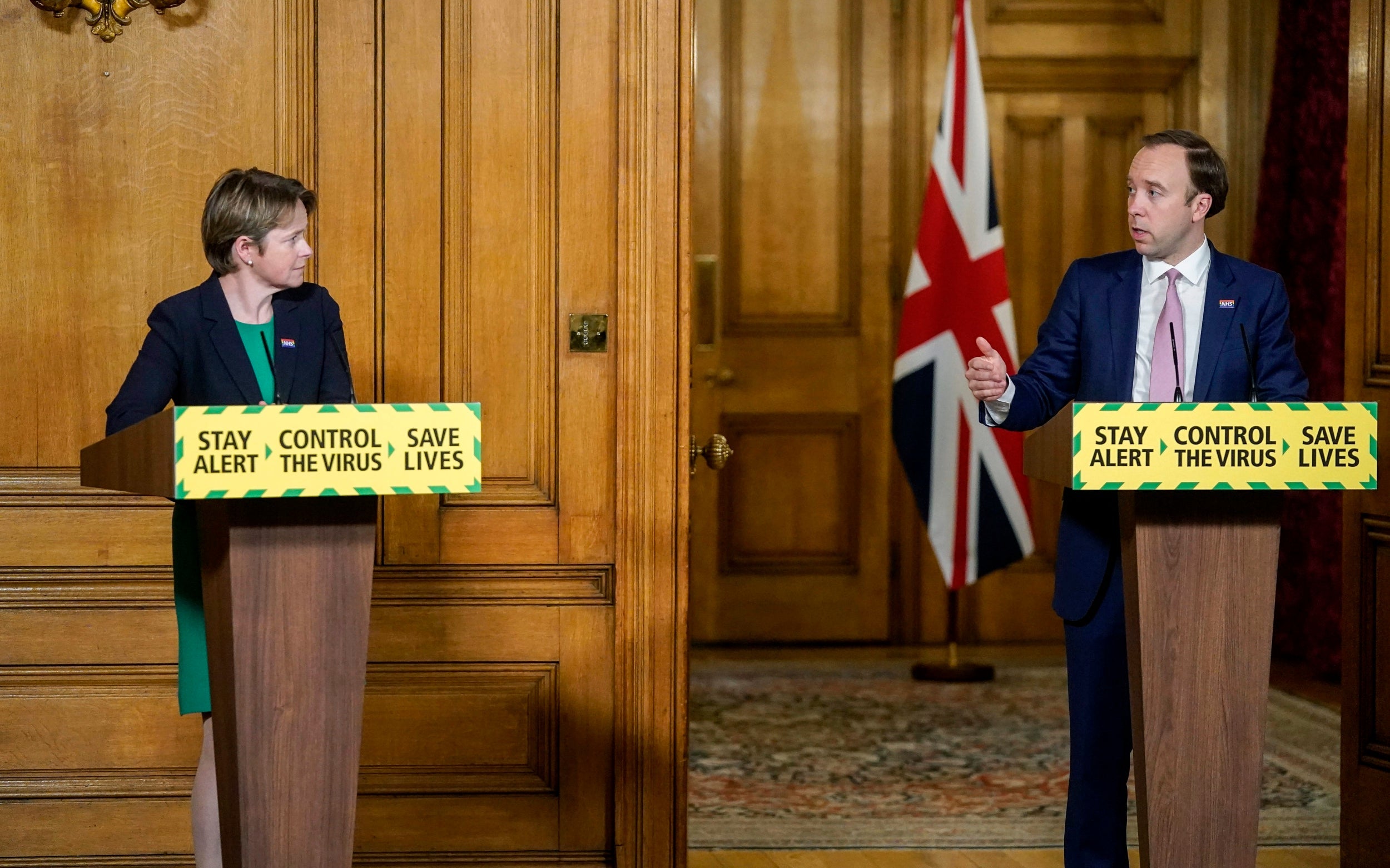This government has destroyed its relationship with councils – and it will doom track and trace
Throughout the coronavirus crisis, our over-centralised system of government has set back the national effort, writes Andrew Grice


When Matt Hancock unveiled the first results of the government’s test and trace scheme, he praised the team delivering it: the army of contract tracers, the NHS and Public Health England (PHE) staff, and even name-checked some of the private sector firms involved – Boots, Amazon, Serco and SITA. But the health secretary didn’t mention local authorities.
It was a revealing omission. The government’s attempts to deliver the “world-beating” test and trace system promised by Boris Johnson has been badly hindered by its traditional hostility towards local councils.
Hancock has form. Trying to deflect criticism for the tragedy in care homes after hospitals sent them patients with coronavirus, he told MPs last month: “The policy levers that I have as secretary of state are only through councils, which themselves have to then act.”
Throughout the coronavirus crisis, our over centralised system of government has set back the national effort. PHE tried to run the testing system by itself, and didn’t turn to private, university and research institute laboratories with plenty of spare capacity until very late in the day.
Lack of capacity forced ministers into their fateful decision to abandon contact tracing in March. Since then, they have been obsessed with the number of tests available rather than a proper tracing strategy. What mattered most to them was big, headline-grabbing numbers. Hancock gave us 100,000 a day, and included tests sent out by post to scrape over the line. Not to be outdone, Johnson doubled it.
The much-trumpeted smartphone app has now turned into an embarrassment. A second wave of the Isle of Wight trial was quietly postponed. Ministers now play down the app’s significance, amid speculation that their centralised, NHS-run system might be replaced by a decentralised one developed by Apple and Google.
It was little wonder, then, that Friday’s results from the first week of test and trace were patchy. Only 67 per cent of those who tested positive for coronavirus gave details of their close contacts. There were better numbers for those contacts who were then reached by NHS staff (85 per cent) and told to self-isolate for 14 days. But the crucial figures on how quickly this is happening are not available yet.
Independent Sage, the rival group of scientists led by the government’s former top adviser David King, calculated that test and trace is picking up the contacts of only 25 per cent of people with symptomatic infections so far. It warned that the centralised programme is “not fit for purpose” and makes the government’s goal of tracing 80 per cent of contacts “impossible”, urging a rapid transition to a locally-managed system instead.
Hancock insisted his scheme has already had “a huge impact” but toned down Johnson’s “world-beating” promise to “world class”. The UK is very unlikely to beat South Korea’s (highly decentralised) system.
The government’s needless enmity towards councils meant it initially spurned offers of experienced boots on the ground such as local public health directors and environmental health officers, who routinely carry out contact tracing. Perhaps ministers did not want to draw too much attention to the hollowing out of town hall services after the government cut its grants to councils by 49 per cent since 2010.
Local authorities feel left out in the cold as a command and control government rushes out its response to the pandemic without any consultation, often to ensure it has something to announce at the Downing Street press conference.
Belatedly, Tom Riordan, chief executive of Leeds City Council, was brought in to advise the track and trace team. But local authorities complain they are not yet getting the detailed information they need on cases. (Nor are GPs.) Councils worry they do not have enough powers to impose local lockdowns, which – surprise, surprise – reside with the health secretary.
It is finally dawning on ministers that they will need councils onside to ensure the success of contact tracing, a vital tool to keep the number of infections down, give people confidence and allow the lockdown to be eased. Whitehall will issue guidance on how to contain local flare-ups in what Johnson calls his “whack-a-mole” strategy. But there is understandable suspicion and mistrust in town halls, with some council leaders fearing the government will dump its problems in their lap, just as it left them to bear the brunt of the cuts since 2010.
Although ministers do not rule out reimposing a full national lockdown if the number of infections rises, they intend to opt for local crackdowns to limit the damage to the economy. Privately, ministers admit bringing back national restrictions after easing them would be very damaging politically.
Indeed, it would add to the lengthening list of government mistakes and growing impression of incompetence that the public is starting to notice. Ministers have finally reached the right decision to go local, but for the wrong reasons.
Join our commenting forum
Join thought-provoking conversations, follow other Independent readers and see their replies
2Comments